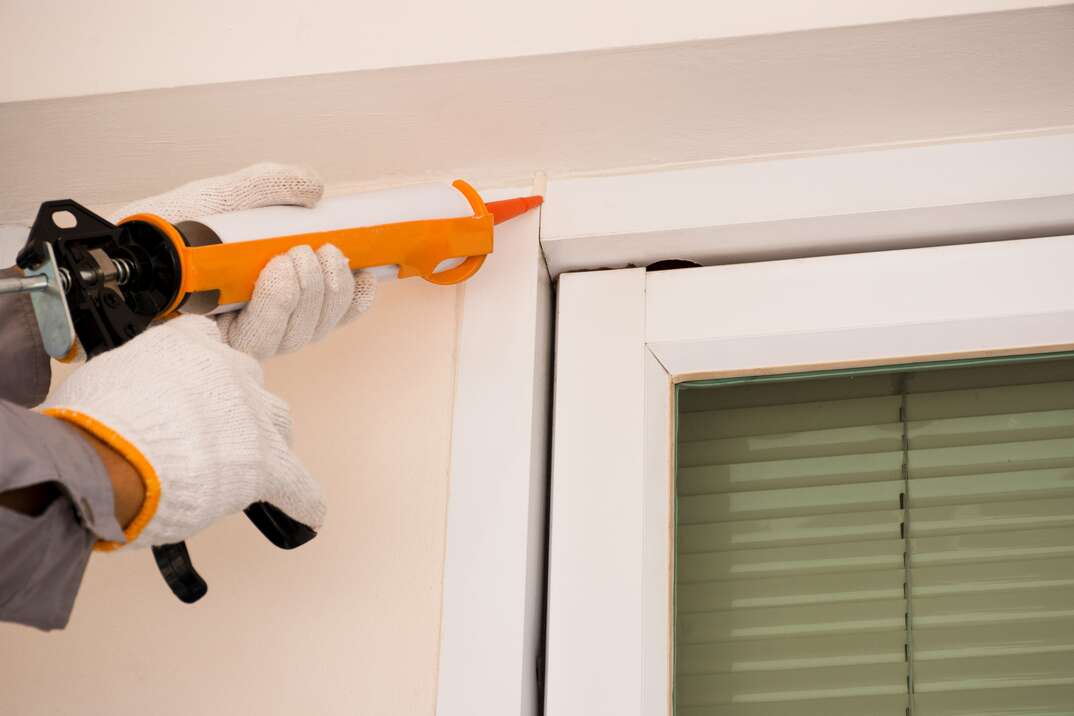How to Use a Caulking Gun

A caulking gun makes it easier to apply a sealant to cracks and gaps. Fortunately, it's easy to use a caulking gun to create a smooth finish, even if you're new to DIY projects.
This May Also Interest You: Where Can You Rent Tools? And How Much Does It Cost?
Here’s how to use a caulking gun effectively, plus some handy tips and tricks.
How Do You Set Up a Caulking Gun?
Before you start using your caulking gun for the first time, you'll need to prepare and insert the caulk tube.
Tubes of caulk have a pointed tip. Cut the end of the tip off before inserting it into the caulking gun. If your caulking gun has a hole for trimming tube tips, poke the tip into the hole and press the trigger to chop off the end. You can use a utility knife if your caulking gun doesn't have a cutting hole.
How much of the tip you cut off affects how quickly the caulk flows from the tube. If you cut too much off, the caulk may flow too quickly, so it's wise to start by trimming a small amount off and removing more if necessary. Once you've cut the tip, poke a skewer or long screw inside to break the tube seal.
Finally, place the tube of caulk inside the caulking gun. You'll need to pull the plunger back as far as possible first by pulling the trigger or turning the rod upwards if it has notches. Push the tube into the gun and squeeze the trigger gently a few times until the caulk reaches the tube tip.
Do You Push or Pull a Caulk Gun?
It's best to apply caulk by pulling the gun towards you in a line. Pulling the caulking gun makes it easier to caulk evenly. Pushing the caulking gun away from you increases the likelihood of an uneven finish.
How Do You Control a Caulking Gun?
You should hold a caulking gun with one hand on the trigger and the other supporting the tip end of the tube to give you more control. Hold the gun at a 45-degree angle to allow gravity to assist the flow of caulk from the tube tip.
Moving the caulking gun at the correct speed is essential for achieving a smooth, even finish. It's best to move the tool at a moderate, even pace while you press the trigger to release the caulk and aim to complete the same line in a single motion. Moving the gun too quickly will make the caulk line too thin, while moving it too slowly will cause lumps. You can go back and add more caulk if you miss a spot. Practicing using your caulking gun first on a thick sheet of paper can help you learn what pressure and speed to use before starting your project.
More Related Articles:
- 10 Tools You Probably Don’t Have (But Definitely Should)
- How to Use a Voltage Tester
- Splash Course: How to Use a Power Washer
- What Is Screwdriver ‘Cam Out’ and How Can I Avoid It?
- Tale of the Tape: How to Use Painter’s Tape
How Do You Take the Tube Out of a Caulking Gun?
First, seal the tube tip before removing the tube to stop any remaining caulk from leaking out. You can place a cap over the end or drive a nail or screw into the hole to plug it.
Next, find the release lever next to the trigger and press it down, pulling the plunger back as you do so to remove it from the tube. Pull the tube out of the caulking gun and dispose of it.
Wash or wipe the caulking gun thoroughly to remove any caulk residue. You can remove latex caulk by washing it with warm water and soap. Remove silicone-based caulk by rubbing it firmly with a dry cloth. Cleaning your tool can make it easier to insert and later remove the new tube.
Tips for Applying Caulk
Knowing how to caulk correctly can help you achieve cleaner lines and a better finish. Follow these tips to achieve professional-looking results:
- Unclog a used caulk tube tip by twisting a screw inside so that the caulk can flow evenly.
- Cut the tip straight so that you can maneuver the caulking gun from any angle.
- Tape along the caulking line with painter’s tape so that you can remove any overflow in a straight line. Peel the tape off immediately after applying the caulk to stop it from drying onto the surface.
- Use a ball of caulk to mold a cap for the tube tip. Sealing the tube between uses will prevent the caulk inside from drying out and can stop caulk from escaping when it's time to remove the tube.
- Warm a teaspoon by dipping it in warm water, and use it to smooth down any lumpy or uneven areas along a freshly caulked seal.


